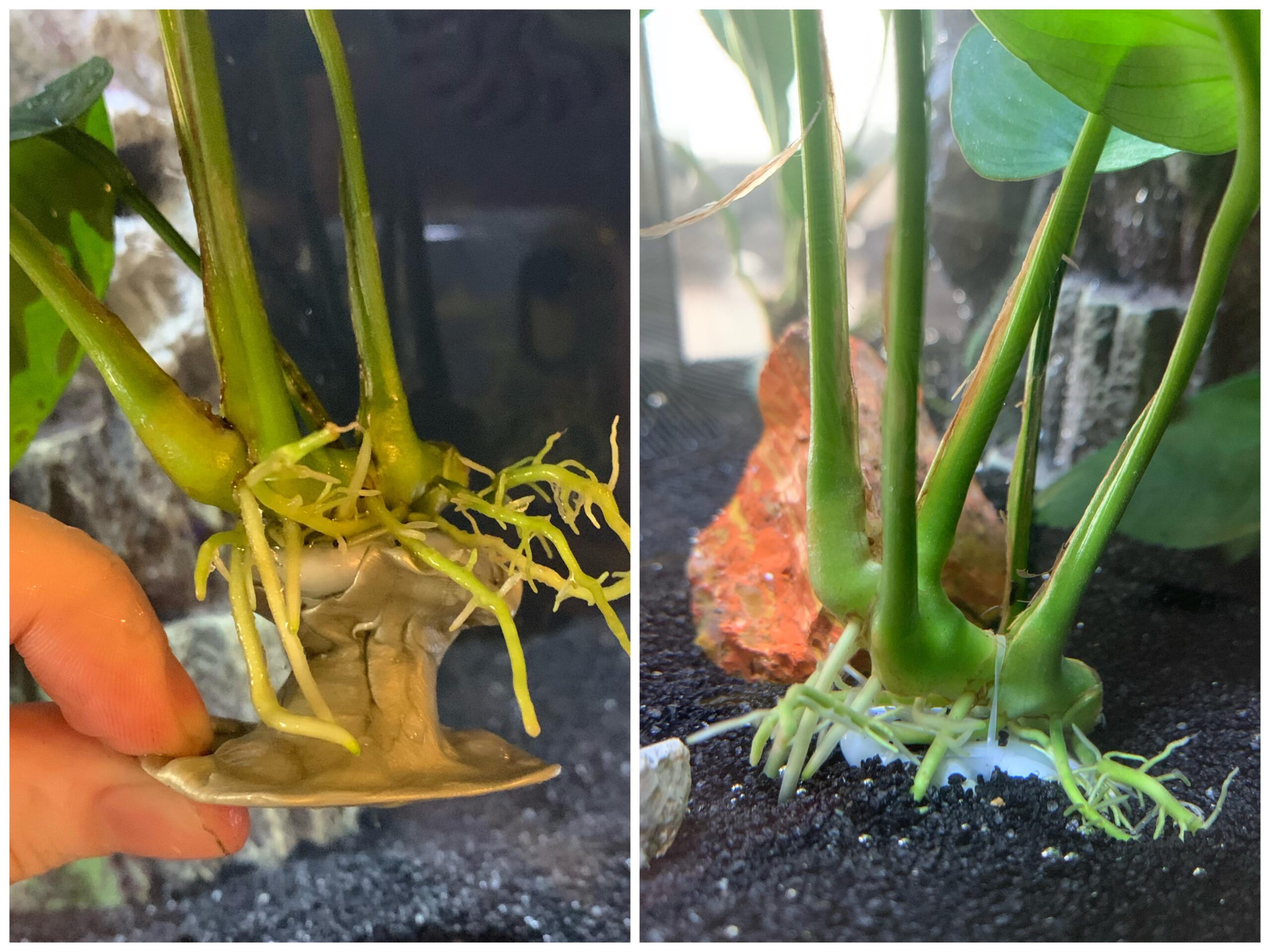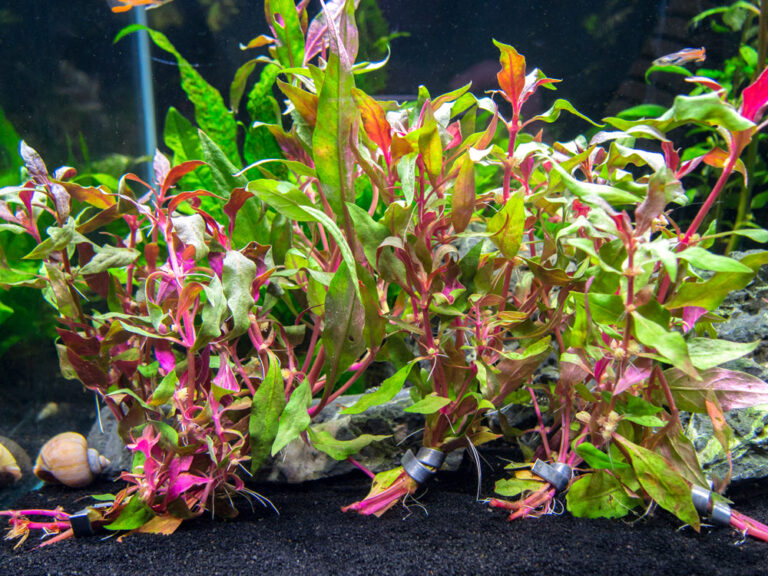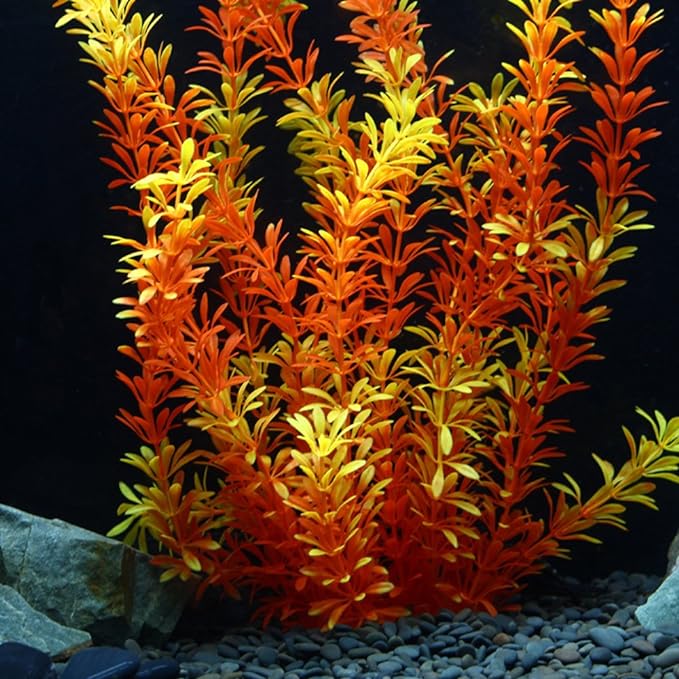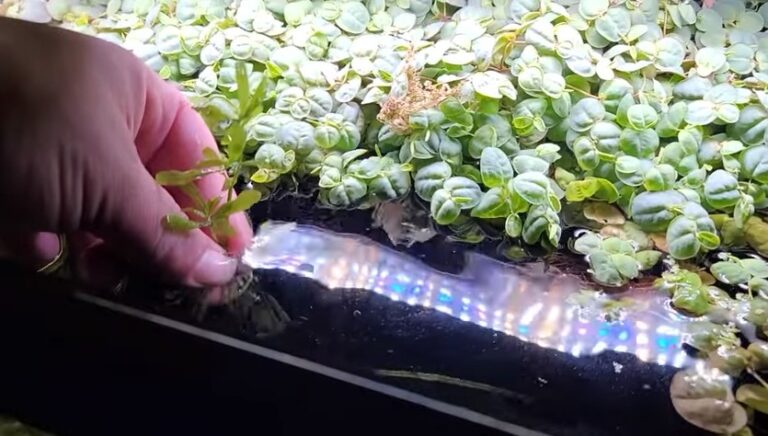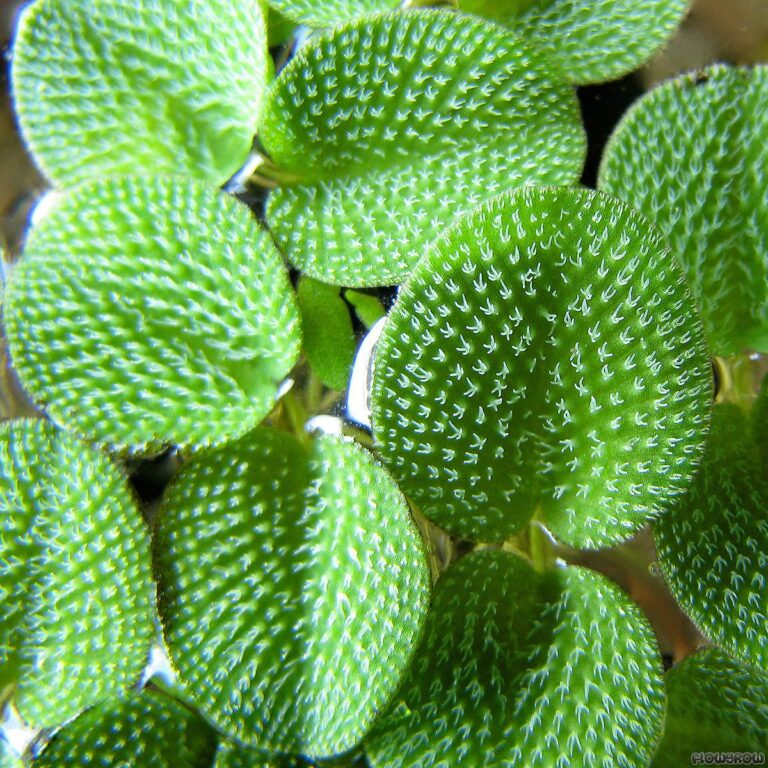Aquarium Plant Rhizome: Transform Your Tank with Lush Greenery
Aquarium plant rhizomes are horizontal stems that grow below or near the substrate. They anchor plants and store nutrients.
Aquarium plants with rhizomes are ideal for aquascaping. These plants grow horizontally and can spread across the tank. Popular choices include Anubias, Java Fern, and Bucephalandra. Rhizomes should not be buried in substrate to prevent rotting. Attach them to rocks, driftwood, or décor for best results.
These plants are low-maintenance and suitable for beginners. They provide natural beauty and improve water quality. Rhizome plants can also create hiding spots for fish. Ensure proper lighting and water conditions for optimal growth. Regular trimming encourages healthy development. Adding rhizome plants enhances the overall aesthetic of your aquarium.

Credit: www.aquariumcoop.com
Introduction To Rhizome Plants
Welcome to the world of aquarium plant rhizomes. These plants are unique and easy to care for. They provide numerous benefits for your aquarium.
What Are Rhizome Plants?
Rhizome plants grow from a thick horizontal stem. This stem is called a rhizome. The rhizome lies on or near the substrate.
Unlike other plants, rhizomes do not root deeply. Instead, they spread across the surface. This makes them easy to move and arrange.
Common rhizome plants include Anubias, Java Fern, and Bucephalandra.
Benefits For Aquariums
Rhizome plants offer many benefits for aquariums:
- Easy Care: They are low-maintenance and suitable for beginners.
- Water Quality: They improve water quality by absorbing nitrates.
- Habitat: These plants provide hiding spots for fish and shrimp.
- Versatility: They can be attached to rocks, driftwood, or left free-floating.
Rhizome plants enhance the beauty of your aquarium. Their lush green leaves create a natural look.
| Plant Type | Light Requirement | Growth Rate |
|---|---|---|
| Anubias | Low to Medium | Slow |
| Java Fern | Low | Slow |
| Bucephalandra | Low to Medium | Slow |
Popular Rhizome Plant Varieties
Aquarium enthusiasts love rhizome plants for their beauty and ease of care. These plants enhance the look of any tank and are perfect for beginners and experts alike. This section covers three popular rhizome plant varieties: Anubias, Java Fern, and Bolbitis.
Anubias
Anubias plants are easy to grow. They thrive in low light and require minimal maintenance. Their broad, dark green leaves make a striking contrast in any aquarium. You can attach Anubias to rocks or driftwood. They grow slowly but steadily.
| Feature | Description |
|---|---|
| Light Requirement | Low |
| Growth Rate | Slow |
| Difficulty Level | Easy |
Java Fern
Java Fern is another favorite among aquarists. It can grow in various water conditions. This plant has long, narrow leaves that provide excellent cover for fish. Java Fern is versatile and can be planted in the substrate or attached to decorations.
- Light Requirement: Low to Medium
- Growth Rate: Moderate
- Difficulty Level: Easy
Bolbitis
Bolbitis, also known as African Water Fern, is a bit more demanding. It prefers flowing water and higher light levels. Its delicate, fern-like leaves add a unique texture to aquariums. Bolbitis requires CO2 supplementation for optimal growth.
- Light Requirement: Medium to High
- Growth Rate: Slow
- Difficulty Level: Moderate
These rhizome plants can transform any aquarium into an underwater paradise. Their unique characteristics make them invaluable in any aquascape.
Choosing The Right Rhizome Plant
Choosing the right rhizome plant for your aquarium can be tricky. Rhizome plants are popular for their beauty and ease of care. Understanding your tank’s needs is essential for selecting the best plant.
Tank Size Considerations
Your tank size plays a big role in plant selection. Small tanks need small rhizome plants. These plants won’t overcrowd your tank. Large tanks can handle bigger plants. You can mix different sizes for a diverse look.
| Tank Size | Recommended Rhizome Plants |
|---|---|
| Small (up to 10 gallons) | Anubias nana, Bucephalandra |
| Medium (10-30 gallons) | Java Fern, Anubias barteri |
| Large (30+ gallons) | Aponogeton, Crinum |
Light And Water Requirements
Light and water conditions are vital for plant health. Most rhizome plants need low to medium light. This makes them perfect for beginners. High light can make them grow faster but may need more care.
Water parameters also matter. Rhizome plants thrive in a pH range of 6.5 to 7.5. They prefer a temperature between 72°F and 82°F. Make sure to check your water regularly.
- Light: Low to Medium
- pH: 6.5 to 7.5
- Temperature: 72°F to 82°F
Follow these tips to choose the right rhizome plant for your tank. Happy planting!

Credit: www.aquariumcoop.com
Planting And Anchoring Rhizome Plants
Rhizome plants are beautiful additions to any aquarium. They have unique stems called rhizomes. These stems spread horizontally. Proper planting and anchoring are crucial for their growth.
Proper Placement
Proper placement is vital for rhizome plants. Rhizomes must stay above the substrate. Burying them can lead to rotting. Place the plant in a spot with good light. Light helps them thrive.
- Ensure the rhizome is above the substrate.
- Choose a spot with adequate light.
- Avoid direct currents to prevent damage.
Consider the plant’s size. Larger plants need more space. Smaller plants can fit in tighter spots.
Anchoring Techniques
Anchoring keeps rhizome plants stable. There are various methods to anchor them.
| Technique | Description |
|---|---|
| Using Rocks | Place the rhizome between rocks. |
| Using Driftwood | Tie the rhizome to driftwood with thread. |
| Using Glue | Use aquarium-safe glue to attach rhizomes. |
- Using Rocks: Place the rhizome between two rocks.
- Using Driftwood: Tie the rhizome to driftwood using thread.
- Using Glue: Apply aquarium-safe glue to the rhizome.
Each method has its benefits. Rocks provide natural hiding spots. Driftwood offers a rustic look. Glue ensures a strong hold.
Caring For Rhizome Plants
Rhizome plants are unique and beautiful additions to any aquarium. Their care involves understanding specific needs to ensure they thrive. This section will cover two main aspects: Water Quality and Nutrient Needs.
Water Quality
Maintaining proper water quality is crucial for rhizome plants. They need clean and clear water to grow well. Ensure the water is free from pollutants and toxins.
- pH Level: Keep the water pH between 6.5 and 7.5.
- Temperature: Maintain a temperature of 72°F to 78°F.
- Filtration: Use a good filter to keep the water clean.
Regular water changes help in keeping the environment healthy. Change 25% of the water weekly for the best results.
Nutrient Needs
Rhizome plants have specific nutrient needs to flourish. They absorb nutrients from the water and substrate.
| Nutrient | Importance |
|---|---|
| Iron | Essential for vibrant green leaves. |
| Potassium | Helps in overall plant health. |
| Phosphates | Supports root development. |
Using a good quality liquid fertilizer can help meet these nutrient needs. Ensure you follow the recommended dosage to avoid over-fertilizing.
By focusing on water quality and nutrient needs, you can ensure your rhizome plants thrive.
Preventing Common Issues
Keeping your aquarium plants healthy is essential. Common issues like algae and diseases can harm them. Let’s explore how to prevent these problems.
Algae Control
Algae can ruin the beauty of your aquarium. Control algae growth with these tips:
- Limit Light Exposure: Too much light promotes algae growth. Keep light on for 8 hours daily.
- Avoid Overfeeding: Excess food decays and fuels algae. Feed fish sparingly.
- Regular Water Changes: Change 25% of the water weekly. This removes nutrients algae thrive on.
- Introduce Algae Eaters: Add algae-eating fish or snails. They help keep algae in check.
- Use Algae Inhibitors: Products like liquid carbon reduce algae growth. Follow the instructions carefully.
Detecting Plant Diseases
Plant diseases can spread fast. Early detection is key. Look for these signs:
| Symptom | Possible Cause | Solution |
|---|---|---|
| Yellow Leaves | Nutrient Deficiency | Add fertilizer or root tabs. |
| Holes in Leaves | Pests | Use pest control methods. |
| Black Spots | Fungal Infection | Remove affected leaves and treat with fungicide. |
| Wilting | Improper Lighting | Adjust light intensity or duration. |
Regularly check your plants. Healthy plants make a vibrant aquarium.
Aquascaping With Rhizome Plants
Aquascaping is an art that combines aquarium plants and design. Using rhizome plants can add a unique touch to your aquarium. These plants have roots that grow horizontally. This makes them versatile for various designs.
Design Tips
Rhizome plants are easy to use in aquascaping. They thrive on rocks and driftwood. Avoid planting rhizomes directly in the substrate. This can cause them to rot. Instead, attach them to hard surfaces using fishing line or glue.
Choose plants like Anubias, Java Fern, and Bucephalandra. These plants are hardy and low-maintenance. They can thrive in low light and low CO2 environments. This makes them perfect for beginners.
Creating Depth And Texture
Rhizome plants add depth and texture to your aquarium. Place larger plants at the back. This creates an illusion of depth. Use smaller plants in the front. This can make your tank look more spacious.
Mix different types of rhizome plants. This adds variety in texture and color. Anubias have broad, dark green leaves. Java Fern has narrow, delicate leaves. Bucephalandra offers unique colors and shapes. Combining these can create a vibrant underwater landscape.
| Plant Type | Leaf Shape | Light Requirement |
|---|---|---|
| Anubias | Broad | Low |
| Java Fern | Narrow | Low |
| Bucephalandra | Varied | Low to Medium |
Rhizome plants are versatile and beautiful. They can transform your aquarium into a natural, serene environment. Experiment with different designs. Enjoy the process of creating your own underwater garden.
Enhancing Tank Biodiversity
Adding aquarium plant rhizomes can greatly enhance your tank’s biodiversity. These plants provide shelter, food, and oxygen, creating a natural ecosystem. They support various species and help maintain a balanced environment.
Compatibility With Fish
Aquarium plant rhizomes are generally compatible with most fish species. They offer hiding spots and reduce stress in fish. This is important for the well-being of your aquatic pets. Rhizome plants like Java Fern and Anubias are popular choices. They are hardy and easy to care for.
Some fish species nibble on plants, but rhizomes are usually left alone. This makes them ideal for tanks with plant-eating fish. Below is a table showing fish compatibility with common rhizome plants:
| Fish Species | Compatible Rhizome Plants |
|---|---|
| Betta | Java Fern, Anubias |
| Goldfish | Java Fern |
| Guppies | Java Fern, Anubias, Bucephalandra |
Creating A Balanced Ecosystem
Rhizome plants play a crucial role in creating a balanced ecosystem. They absorb excess nutrients, reducing algae growth. This helps maintain clean water and supports healthy fish. The roots of rhizome plants anchor them to rocks or driftwood. This makes them stable and less likely to be uprooted by fish.
Here are some benefits of adding rhizome plants to your tank:
- Improved Water Quality: Rhizome plants filter out toxins and waste.
- Oxygenation: They produce oxygen, essential for fish health.
- Natural Decor: These plants enhance the visual appeal of your tank.
Incorporating rhizome plants can transform your aquarium into a vibrant, self-sustaining ecosystem. They offer numerous benefits and require minimal maintenance. Enjoy the beauty and health they bring to your tank.
Advanced Techniques
Aquarium plant rhizomes offer unique advantages for advanced aquarists. These techniques enhance plant growth and fish breeding conditions. This section explores advanced methods for propagation and breeding.
Propagation Methods
Propagating rhizome plants can be rewarding. Here are some effective techniques:
- Division: Carefully cut the rhizome into sections. Ensure each piece has a leaf and root.
- Layering: Bury a part of the rhizome in the substrate. It will grow new shoots.
- Cuttings: Trim healthy leaves with some rhizome. Plant them in a suitable substrate.
Each method has its benefits. Choose based on your tank setup and goals.
Using Rhizome Plants In Breeding Tanks
Rhizome plants create ideal conditions in breeding tanks. They offer shelter and improve water quality. Here are some benefits:
| Benefits | Description |
|---|---|
| Shelter | Fish fry hide among the leaves. This increases their survival rate. |
| Water Quality | Rhizome plants absorb toxins. They keep water clean and healthy. |
| Oxygenation | They produce oxygen during photosynthesis. This benefits both fish and plants. |
To maximize these benefits, plant rhizome species like Anubias or Java Fern. They thrive in varied water conditions and provide ample cover.

Credit: aquariumplantsfactory.com
Frequently Asked Questions
What Is An Aquarium Plant Rhizome?
An aquarium plant rhizome is a horizontal stem. It grows new shoots and roots. Rhizomes are vital for plant propagation. They help in nutrient storage.
How To Plant Rhizome Plants In Aquariums?
Plant rhizome plants by tying them to rocks. You can also attach them to driftwood. Do not bury the rhizome. It may rot if buried.
Which Aquarium Plants Have Rhizomes?
Popular rhizome plants include Anubias and Java Fern. Bolbitis also has a rhizome. These plants are easy to care for.
Can Rhizome Plants Grow In Low Light?
Yes, rhizome plants thrive in low light. They are hardy and adaptable. Perfect for beginners and low-tech aquariums.
Conclusion
Aquarium plant rhizomes are essential for a thriving aquatic environment. They provide stability and beauty to your tank. Proper care ensures their growth and longevity. Adding rhizomes can transform your aquarium into a stunning underwater garden. Explore various options to find the perfect fit for your aquatic setup.
Enjoy a vibrant, healthy aquarium!
